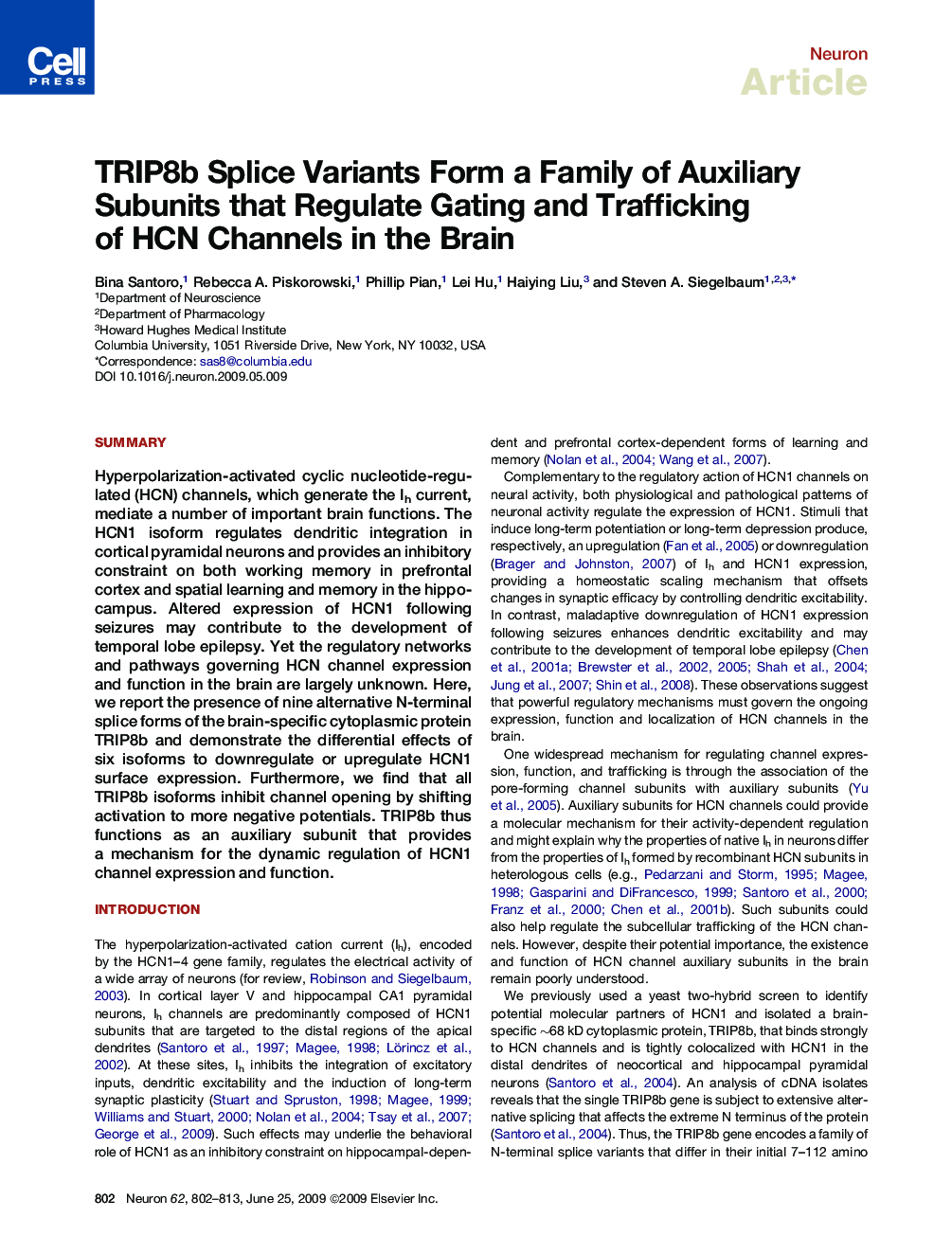| Article ID | Journal | Published Year | Pages | File Type |
|---|---|---|---|---|
| 4321957 | Neuron | 2009 | 12 Pages |
SummaryHyperpolarization-activated cyclic nucleotide-regulated (HCN) channels, which generate the Ih current, mediate a number of important brain functions. The HCN1 isoform regulates dendritic integration in cortical pyramidal neurons and provides an inhibitory constraint on both working memory in prefrontal cortex and spatial learning and memory in the hippocampus. Altered expression of HCN1 following seizures may contribute to the development of temporal lobe epilepsy. Yet the regulatory networks and pathways governing HCN channel expression and function in the brain are largely unknown. Here, we report the presence of nine alternative N-terminal splice forms of the brain-specific cytoplasmic protein TRIP8b and demonstrate the differential effects of six isoforms to downregulate or upregulate HCN1 surface expression. Furthermore, we find that all TRIP8b isoforms inhibit channel opening by shifting activation to more negative potentials. TRIP8b thus functions as an auxiliary subunit that provides a mechanism for the dynamic regulation of HCN1 channel expression and function.
